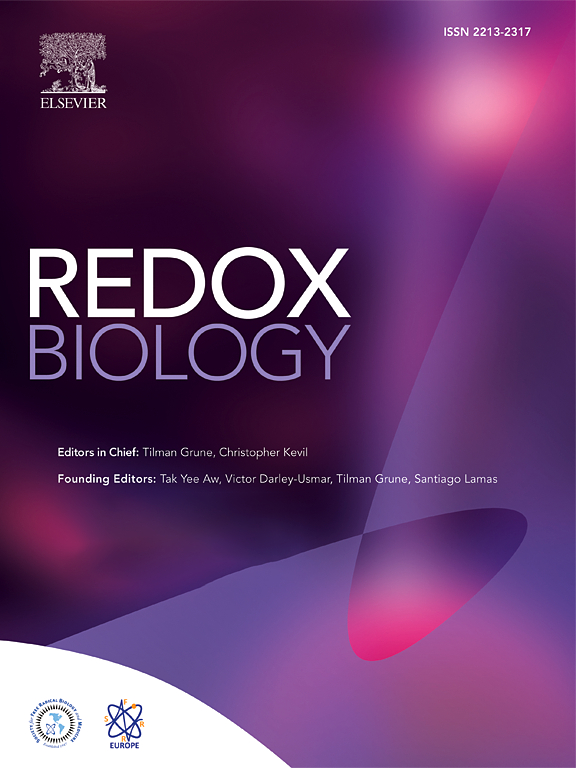NDP52 deficiency accelerates chondrocyte degeneration through promoting pathogenic mitochondrial ROS via reverse electron transport
IF 10.7
1区 生物学
Q1 BIOCHEMISTRY & MOLECULAR BIOLOGY
引用次数: 0
Abstract
NDP52, a constituent of the selective autophagy receptors (SARs), was recognized for its involvement in facilitating substrate degradation via autophagic bridging. However, its autonomous function apart from autophagy remained largely unexplored. Here, we reported that NDP52 was down-regulated in degenerated chondrocytes. Besides, NDP52 deficiency promoted the extracellular matrix (ECM) degradation, inflammation, cell apoptosis and senescence via its autophagy-independent functions. The absence of NDP52 disrupted the flow of electron respiration chains and led to the production of intracellular mitochondrial reactive oxygen species (mtROS). Subsequent mechanistic investigations revealed that the downregulation of NDP52 upregulated the expression levels of mitochondrial complex Ⅰ by modulating MTIF3 expression, leading to reverse electron transport (RET) and mtROS production. Our research highlights the significance of NDP52 in facilitating chondrocyte degeneration and osteoarthritis, and provides insights into the distinctive mechanism by which autophagy receptors NDP52 induce intracellular mitochondrial ROS dysregulation via non-canonical pathways.

NDP52缺乏通过通过反向电子传递促进致病性线粒体ROS来加速软骨细胞变性
NDP52是选择性自噬受体(sar)的一个组成部分,它通过自噬桥接参与促进底物降解。然而,除了自噬外,其自主功能在很大程度上仍未被探索。在这里,我们报道了NDP52在变性软骨细胞中下调。NDP52缺乏通过其不依赖自噬的功能促进细胞外基质(extracellular matrix, ECM)降解、炎症、细胞凋亡和衰老。NDP52的缺失破坏了电子呼吸链的流动,导致细胞内线粒体活性氧(mtROS)的产生。随后的机制研究表明,NDP52的下调通过调节MTIF3的表达上调线粒体复合体Ⅰ的表达水平,导致反向电子传递(RET)和mtROS的产生。我们的研究强调了NDP52在促进软骨细胞变性和骨关节炎中的重要性,并提供了自噬受体NDP52通过非规范途径诱导细胞内线粒体ROS失调的独特机制。
本文章由计算机程序翻译,如有差异,请以英文原文为准。
求助全文
约1分钟内获得全文
求助全文
来源期刊

Redox Biology
BIOCHEMISTRY & MOLECULAR BIOLOGY-
CiteScore
19.90
自引率
3.50%
发文量
318
审稿时长
25 days
期刊介绍:
Redox Biology is the official journal of the Society for Redox Biology and Medicine and the Society for Free Radical Research-Europe. It is also affiliated with the International Society for Free Radical Research (SFRRI). This journal serves as a platform for publishing pioneering research, innovative methods, and comprehensive review articles in the field of redox biology, encompassing both health and disease.
Redox Biology welcomes various forms of contributions, including research articles (short or full communications), methods, mini-reviews, and commentaries. Through its diverse range of published content, Redox Biology aims to foster advancements and insights in the understanding of redox biology and its implications.
 求助内容:
求助内容: 应助结果提醒方式:
应助结果提醒方式:


